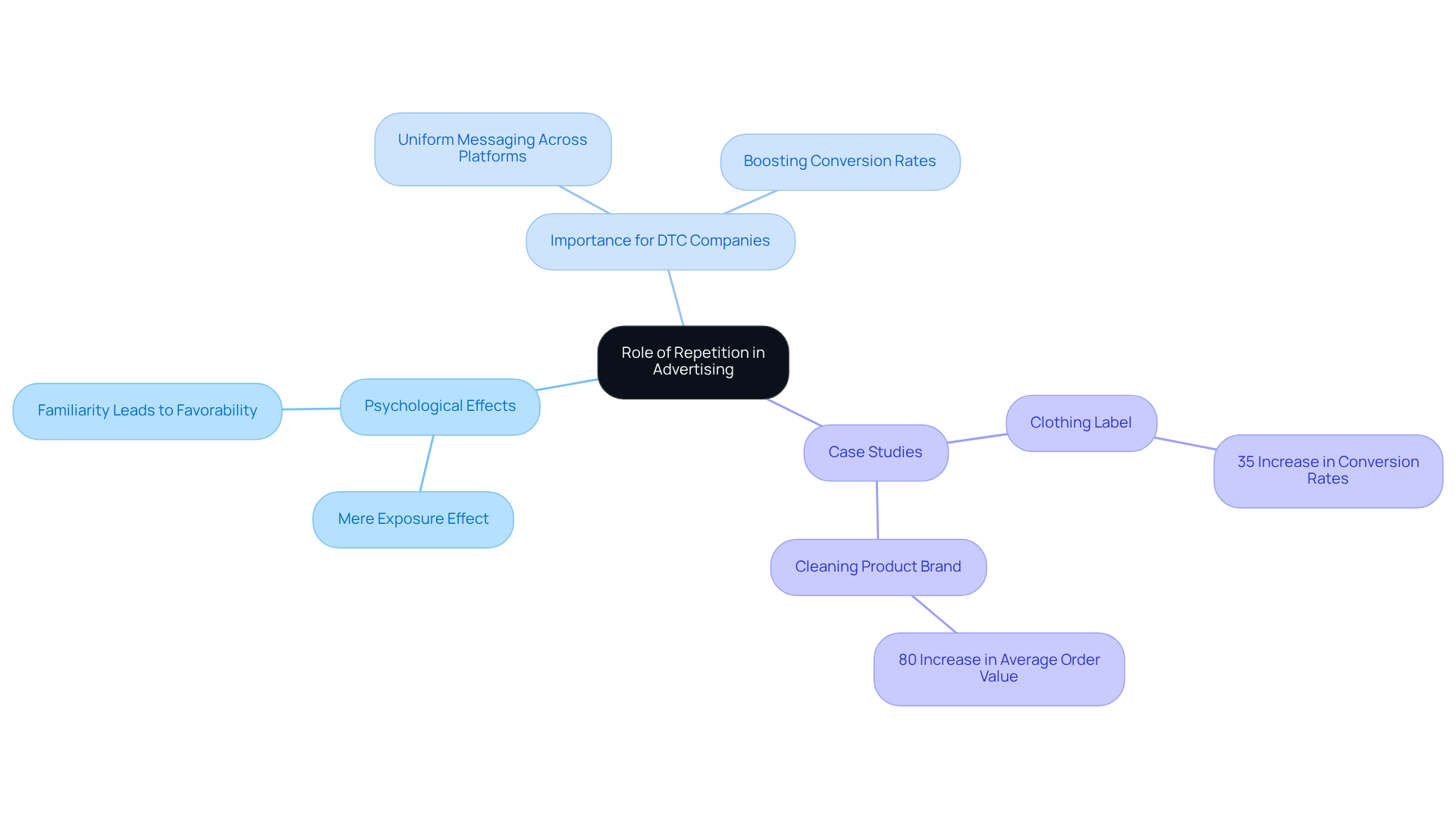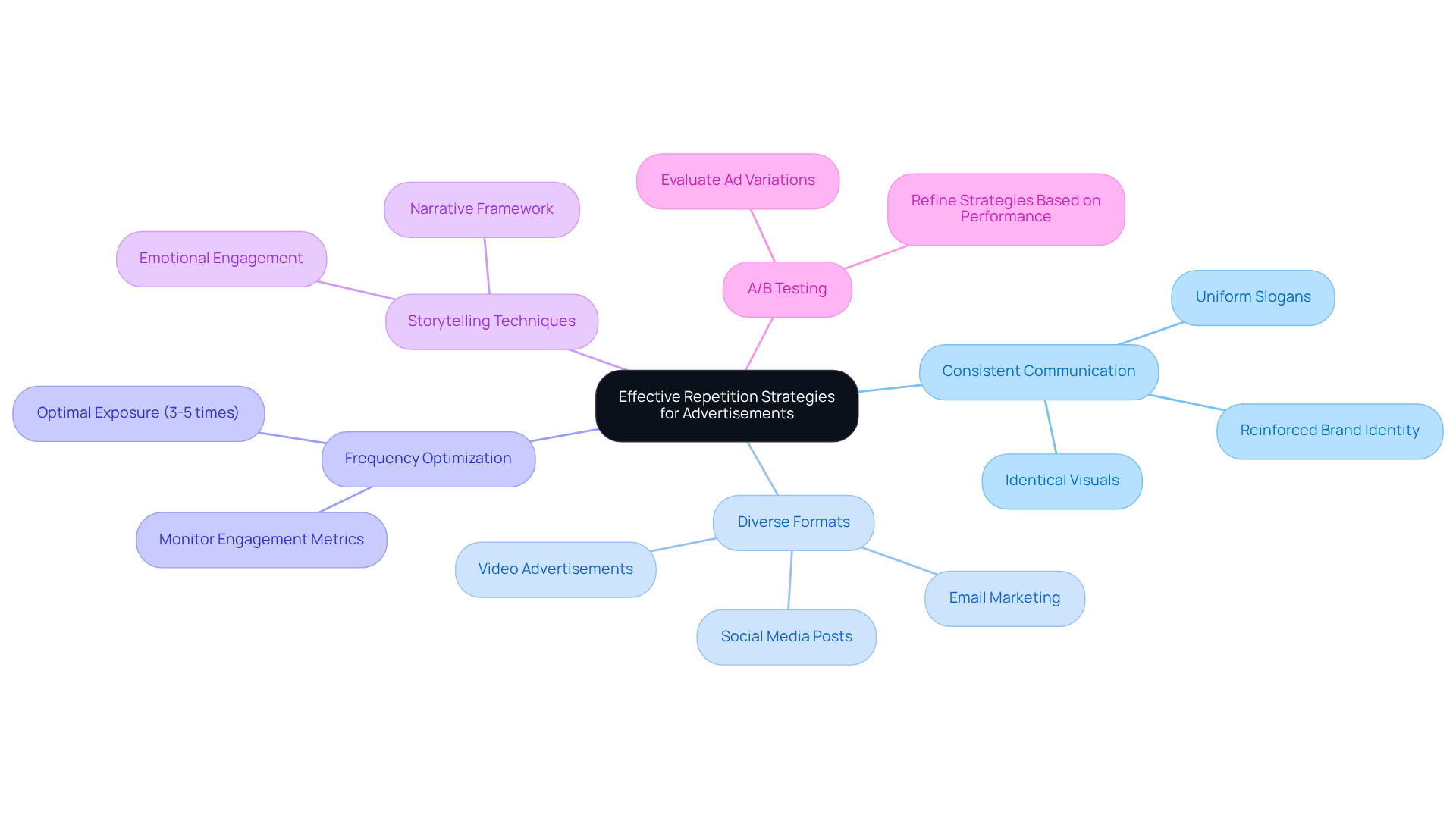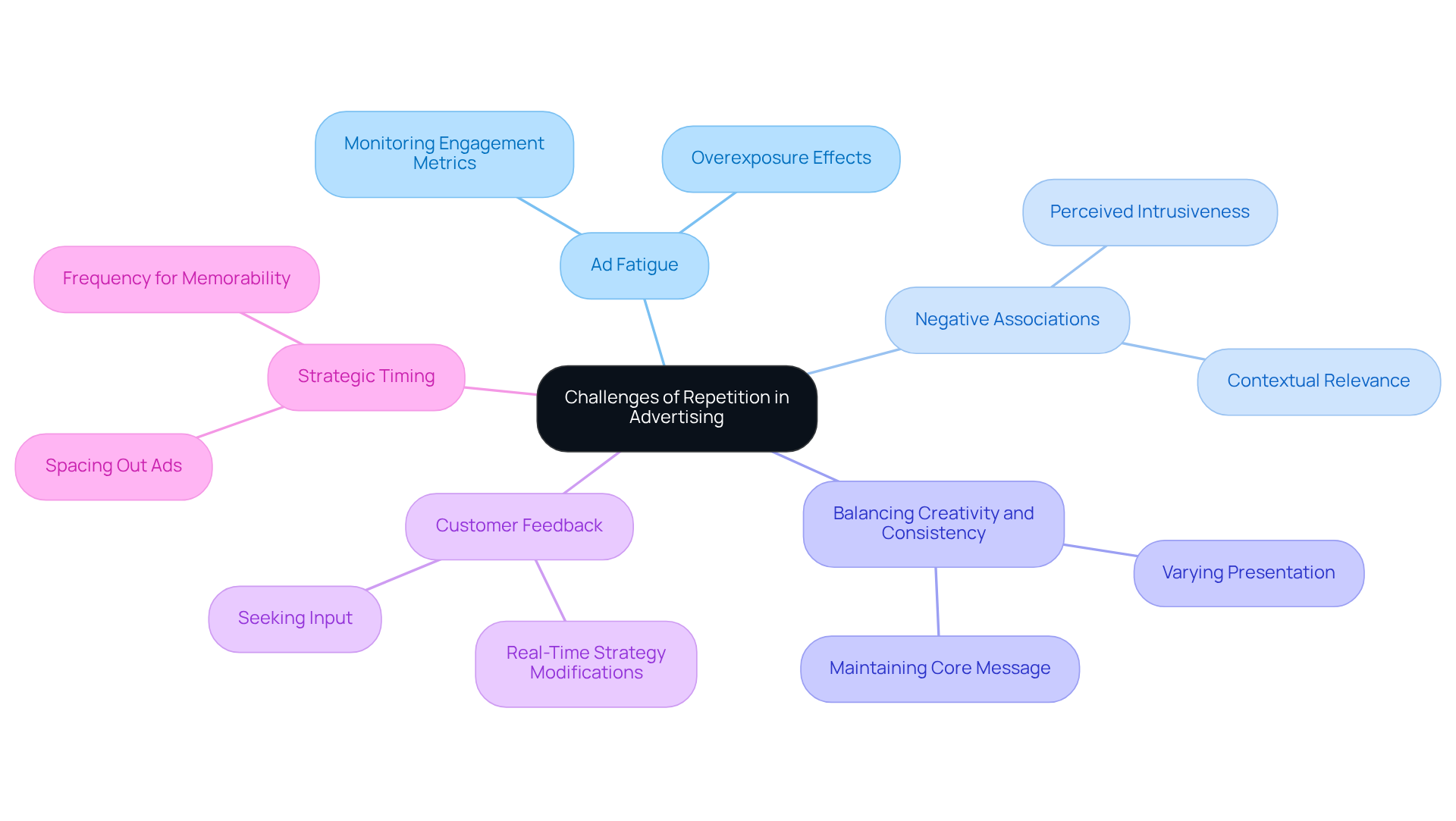
Overview
This article examines how direct-to-consumer (DTC) brands can effectively master advertising through the strategic application of repetition, a technique that significantly enhances product recognition and recall. Evidence supports this approach, demonstrating that consistent messaging across diverse platforms, when paired with effective strategies such as storytelling and frequency optimization, can lead to substantial increases in conversion rates and customer loyalty. However, it is crucial to address potential challenges, including ad fatigue and negative associations, to ensure sustained success.
Introduction
Repetition transcends mere marketing jargon; it serves as a formidable psychological instrument that influences consumer behavior and bolsters brand recognition. For direct-to-consumer (DTC) brands, effectively leveraging repetition in advertising can yield substantial enhancements in conversion rates and foster customer loyalty. Yet, the challenge remains: how can brands engage consumers without succumbing to ad fatigue or adverse perceptions? This article explores effective strategies for harnessing the power of repetition, presenting successful case studies and addressing the potential pitfalls that DTC brands must navigate to optimize their advertising effectiveness.
Understand the Role of Repetition in Advertising
Repetition in advertisements with repetition serves as a formidable tool for enhancing product recognition and recall. When individuals encounter consistent messaging, it fosters familiarity, leading to a psychological phenomenon known as the mere exposure effect. This effect posits that individuals are inclined to favor things simply because they are familiar with them. For direct-to-consumer (DTC) companies, this underscores the importance of uniform messaging across various platforms, significantly boosting conversion rates. Research indicates that multiple exposures to a product message are necessary before consumers begin to acknowledge and trust it, making repetition a vital strategy in advertising campaigns.
Parah Group's transformational case studies exemplify the success of this strategy. For instance:
- A $30 million clothing label witnessed a remarkable 35% increase in conversion rates after implementing tactics such as optimizing product pricing, gamifying the progress bar for free shipping thresholds, and highlighting social proof.
- A $15 million cleaning product brand improved its average order value (AOV) by 80% through targeted messaging, bundling strategies, and the inclusion of badges to showcase value.
These outcomes illustrate how advertisements with repetition, when combined with strategic conversion rate optimization (CRO) efforts, can significantly enhance customer loyalty and drive sales.

Implement Effective Repetition Strategies for Advertisements
To implement effective repetition strategies, DTC brands must adopt the following approaches:
-
Consistent Communication: It is crucial to maintain uniformity in core communication across all advertisements with repetition. This entails employing advertisements with repetition that use identical slogans, visuals, and themes to effectively reinforce brand identity.
-
Diverse Formats: While ensuring consistent communication, brands should vary the formats of their advertisements. This can involve leveraging multiple platforms, such as video, social media posts, and email marketing, to engage audiences in different contexts without inducing fatigue.
-
Frequency Optimization: Research indicates that optimal exposure for effective recall falls between 3 to 5 times, striking a balance that avoids annoyance. Brands must diligently monitor engagement metrics to identify the ideal frequency for their audience.
-
Storytelling Techniques: Integrating storytelling elements allows brands to reiterate essential concepts within a narrative framework. This approach not only strengthens communication but also engages consumers on an emotional level, thereby enhancing recall.
-
A/B Testing: Regular evaluation of different ad variations is essential to determine which communications resonate most with the audience. This data-driven method empowers companies to refine their strategies based on actual performance.
By employing these strategies, DTC companies can maximize the effectiveness of their advertising campaigns through advertisements with repetition, ensuring that their messages are not merely heard but also remembered.

Address Challenges of Repetition in Advertising
While advertisements with repetition can enhance brand recall, they also present challenges that DTC brands must adeptly navigate.
Ad fatigue can result from overexposure to advertisements with repetition, causing individuals to become annoyed and disengaged. Brands must monitor engagement metrics to identify signs of fatigue and adjust their strategies accordingly.
-
Negative Associations: If consumers perceive repetitive ads as intrusive or irrelevant, it can foster negative perceptions of the company. To counteract this, companies must ensure their advertisements with repetition are contextually relevant and provide value to the audience.
-
Balancing Creativity and Consistency: Consistency is crucial; however, brands must also infuse creativity into their campaigns to maintain audience engagement. This can be accomplished by varying the presentation of the core message while preserving its essence.
-
Customer Feedback: Actively seeking customer input on advertising campaigns is vital for understanding their perceptions. This feedback can assist companies in modifying their strategies in real-time, helping them evade potential pitfalls associated with advertisements with repetition.
-
Strategic Timing: Timing plays a critical role in advertising. Brands should space out their ads appropriately to avoid overwhelming consumers, while ensuring their messages are seen frequently enough to be memorable.
By addressing these challenges, DTC brands can harness the power of repetition without succumbing to the traps that can diminish their advertising effectiveness.

Conclusion
Repetition serves as a formidable ally for direct-to-consumer (DTC) brands, significantly enhancing product familiarity and driving consumer engagement. By consistently delivering uniform messages across various platforms, brands can effectively leverage the mere exposure effect to cultivate trust and recognition. This strategic application of repetition not only elevates conversion rates but also solidifies brand identity within the minds of consumers.
Key strategies for implementing effective repetition encompass:
- Maintaining consistent communication
- Utilizing diverse ad formats
- Optimizing frequency
- Employing storytelling techniques
- Conducting A/B testing
These approaches guarantee that the message resonates with the audience while sidestepping the pitfalls of ad fatigue and negative associations. Case studies, such as those from Parah Group, underscore the tangible benefits of these strategies, revealing significant increases in conversion rates and average order values.
Ultimately, the importance of repetition in advertising cannot be overstated. DTC brands are strongly urged to embrace this technique, striking a balance between consistency and creativity to engage consumers in a meaningful manner. By doing so, they not only enhance brand recall but also forge lasting connections with their audience, paving the way for sustained success in a competitive marketplace.
Frequently Asked Questions
What is the role of repetition in advertising?
Repetition in advertising enhances product recognition and recall by creating familiarity, which leads to the mere exposure effect, where individuals favor things simply because they are familiar with them.
Why is uniform messaging important for direct-to-consumer (DTC) companies?
Uniform messaging across various platforms is crucial for DTC companies as it significantly boosts conversion rates by reinforcing brand recognition and trust among consumers.
How many exposures to a product message are necessary for consumer acknowledgment and trust?
Research indicates that multiple exposures to a product message are necessary before consumers begin to acknowledge and trust it.
Can you provide examples of successful advertising strategies that utilize repetition?
Yes, Parah Group's case studies show that a $30 million clothing label increased conversion rates by 35% through various tactics, and a $15 million cleaning product brand improved its average order value by 80% with targeted messaging and bundling strategies.
What are the benefits of combining repetition with conversion rate optimization (CRO) efforts?
Combining repetition with CRO efforts can significantly enhance customer loyalty and drive sales, as demonstrated by successful case studies.
FAQs











